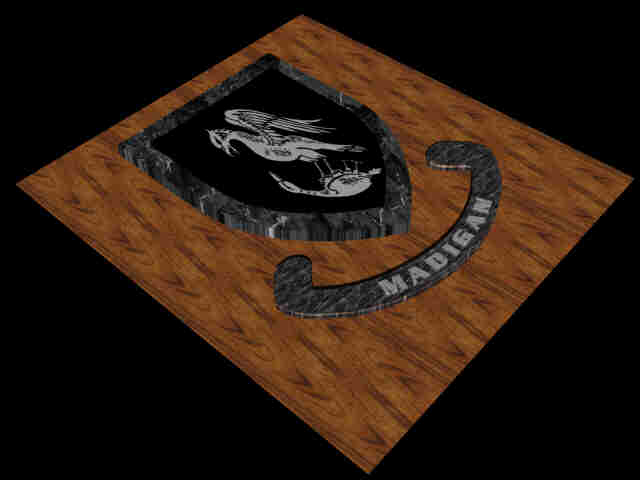Ft. Sumpter
The Opening
Shot of the the Civil War
Charleston,
SC
November 15th, 2001
As we  round out our week in Charleston, SC, I have to
admit that there is much more to this southern seaport than can
possibly be seen in seven days. Beautiful old plantations
surround a historic center that takes up almost half of the city.
From the Revolutionary War to modern days, the city has been a
vibrant trade center with Europe and the West Indies. It also
presented me with an opportunity to continue my selective review
of Civil War Historic sites. A small fort in the middle of
Charleston harbor would play a pivotal roll in American History.
It was here that the final attempts at diplomacy were abandoned
and war was officially started.
round out our week in Charleston, SC, I have to
admit that there is much more to this southern seaport than can
possibly be seen in seven days. Beautiful old plantations
surround a historic center that takes up almost half of the city.
From the Revolutionary War to modern days, the city has been a
vibrant trade center with Europe and the West Indies. It also
presented me with an opportunity to continue my selective review
of Civil War Historic sites. A small fort in the middle of
Charleston harbor would play a pivotal roll in American History.
It was here that the final attempts at diplomacy were abandoned
and war was officially started.  In setting the stage for such a momentous
incident it is necessary to understand that the South did not
have the number of deep water seaports so enjoyed in the north.
Atlanta, Savannah, Charleston, Wilmington and Richmond stood out
as the linchpins in the south's ability to trade with Europe and
the West Indies. The issue of slavery and southern rights had
been festering for a decade. Violence was becoming more common
and debate less effective. With the election of Abraham Lincoln
as President, South Carolina felt its views had been abandoned
and just before Christmas the state legislative body, did what
just months earlier had been unthinkable. In a unanimous vote, on
December 20th, 1860, South Carolina voted to secede from the
Union of the United States, as depicted in the headlines of the Charleston paper. Momentarily, they stood alone as an independent
country, the only state to take such drastic action.
As we wandered through the large National Park's visitor center
and museum, we followed the time line of events. Within days many
other States would join suit and the Confederate States of
America would be born. Back in Charleston, things were shuffling
In setting the stage for such a momentous
incident it is necessary to understand that the South did not
have the number of deep water seaports so enjoyed in the north.
Atlanta, Savannah, Charleston, Wilmington and Richmond stood out
as the linchpins in the south's ability to trade with Europe and
the West Indies. The issue of slavery and southern rights had
been festering for a decade. Violence was becoming more common
and debate less effective. With the election of Abraham Lincoln
as President, South Carolina felt its views had been abandoned
and just before Christmas the state legislative body, did what
just months earlier had been unthinkable. In a unanimous vote, on
December 20th, 1860, South Carolina voted to secede from the
Union of the United States, as depicted in the headlines of the Charleston paper. Momentarily, they stood alone as an independent
country, the only state to take such drastic action.
As we wandered through the large National Park's visitor center
and museum, we followed the time line of events. Within days many
other States would join suit and the Confederate States of
America would be born. Back in Charleston, things were shuffling  back and
forth as each side tried to set up relationships between the
existing Union Naval forces occupying the fortifications around
the city and the quickly gathering military militia of South
Carolina. We boarded the Fort Sumpter Island ferry for the trip
out to the fort. This is the only access to the island. The ride
is a pleasant 30 minute trip during which time we continued our
education with the help of guide. The South demanded a systematic
withdrawal of Union forces from the South. The North refused to
recognize the right of secession and elected to maintain their
position wherever possible. There were four artillery
installations in the harbor all manned by Union troops under the
command
back and
forth as each side tried to set up relationships between the
existing Union Naval forces occupying the fortifications around
the city and the quickly gathering military militia of South
Carolina. We boarded the Fort Sumpter Island ferry for the trip
out to the fort. This is the only access to the island. The ride
is a pleasant 30 minute trip during which time we continued our
education with the help of guide. The South demanded a systematic
withdrawal of Union forces from the South. The North refused to
recognize the right of secession and elected to maintain their
position wherever possible. There were four artillery
installations in the harbor all manned by Union troops under the
command  of
Major Robert Anderson. As opposition forces increased in the
city, Anderson decided to abandon all but one fort, and six days
after the secession, with just 85 men, slipped out into the
harbor to take up residence at Fort Sumpter. South Carolina
wasted no time in taking the abandoned forts around Fort Sumpter
and bringing in their own cannons.
of
Major Robert Anderson. As opposition forces increased in the
city, Anderson decided to abandon all but one fort, and six days
after the secession, with just 85 men, slipped out into the
harbor to take up residence at Fort Sumpter. South Carolina
wasted no time in taking the abandoned forts around Fort Sumpter
and bringing in their own cannons.
